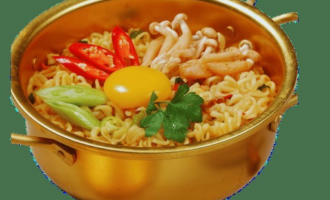MASTERING THE ART OF SAUCE MAKING: A STEP-BY-STEP GUIDE
When it comes to cooking, sauces can elevate a dish from ordinary to extraordinary. They add flavor, texture, and visual appeal to your meals. Whether you are preparing a simple pasta dish or an elaborate gourmet dinner, mastering the art of sauce making is essential. In this guide, we will explore various types of sauces, their components, and a step-by-step process to create delicious sauces at home.
UNDERSTANDING SAUCES: THE BASICS
Sauces can be categorized into various types, each serving a unique purpose in culinary arts. Here are some primary categories:
– Mother Sauces: These are the foundational sauces from which other sauces are derived. The five mother sauces are béchamel, velouté, espagnole, tomato, and hollandaise.
– Compound Sauces: Made by adding flavors to a mother sauce, these include sauces like marinara or beurre blanc.
– Emulsified Sauces: These sauces are created by combining two ingredients that typically do not mix, such as oil and vinegar, like mayonnaise or vinaigrette.
– Pan Sauces: Quick sauces made in the pan after cooking meat, often using the drippings and deglazing with wine or broth.
THE ESSENTIAL COMPONENTS OF A SAUCE
Understanding the components that make up a good sauce is crucial. Here are the key elements:
– Base: This can be stock, cream, or a reduction. It serves as the foundation of your sauce.
– Thickening Agent: This could be flour, cornstarch, or a roux that gives the sauce body.
– Flavorings: Herbs, spices, aromatics (like garlic and onion), and acids (like vinegar or lemon juice) enhance the flavor profile.
– Finishing Touches: Ingredients like butter, cream, or cheese can add richness and complexity to the sauce.
STEP-BY-STEP GUIDE TO MAKING A BASIC SAUCE
Let’s go through the step-by-step process of making a basic sauce using a classic béchamel as an example:
INGREDIENTS:
– 2 tablespoons unsalted butter
– 2 tablespoons all-purpose flour
– 2 cups milk (whole or 2%)
– Salt and pepper to taste
– Nutmeg (optional)
INSTRUCTIONS:
– Melt the Butter: In a medium saucepan over medium heat, melt the butter until it is fully melted but not browned.
– Add the Flour: Sprinkle in the flour and whisk continuously for about 1 to 2 minutes to form a roux. The mixture should turn a light golden color.
– Add the Milk: Gradually pour in the milk while whisking to avoid lumps. Keep whisking until the mixture is smooth.
– Thicken the Sauce: Continue to cook the sauce, stirring frequently, until it thickens and coats the back of a spoon. This should take about 5 to 10 minutes.
– Season: Add salt, pepper, and a pinch of nutmeg if desired. Stir well.
– Serve: Your béchamel sauce is now ready to be used in lasagna, macaroni and cheese, or as a base for other sauces.
TIPS FOR PERFECT SAUCE MAKING
– Use Fresh Ingredients: Fresh herbs and high-quality stocks will significantly improve the flavor of your sauce.
– Temperature Control: Keep an eye on the heat to avoid burning your roux or overcooking your sauce.
– Taste as You Go: Always taste your sauce throughout the cooking process to adjust seasoning as needed.
– Experiment: Don’t be afraid to try different flavors and ingredients to create unique sauces that suit your palate.
ADVANCED SAUCE TECHNIQUES
Once you have mastered the basics, you may want to explore more advanced techniques:
– Deglazing: After cooking meat, use wine or broth to loosen the flavorful bits stuck to the pan, creating a rich pan sauce.
– Emulsification: Learn how to properly emulsify oils and acids for sauces like vinaigrettes and hollandaise.
– Reduction: Concentrate flavors by simmering sauces to evaporate excess liquid.
CONCLUSION
Mastering the art of sauce making is an invaluable skill for any home cook or culinary enthusiast. With practice, patience, and creativity, you can create a world of flavors that will enhance every meal. Whether you’re making a simple béchamel or experimenting with complex reductions, the possibilities are endless. So gather your ingredients, follow the steps, and enjoy the delicious world of sauces!
Happy cooking!
EXPLORE VARIOUS SAUCES
Once you are comfortable with the basic techniques of sauce making, it’s time to explore the diverse world of sauces. Each type has its unique flavor profile and application. Here are a few popular sauces to consider:
1. TOMATO SAUCE
This classic sauce is a staple in many cuisines. Made from ripe tomatoes, onions, garlic, and herbs, it can serve as a base for pasta dishes, pizzas, and more. To make a simple tomato sauce:
– In a saucepan, sauté chopped onions and garlic in olive oil until translucent.
– Add canned tomatoes (crushed or diced) and season with salt, pepper, and your choice of herbs (basil, oregano).
– Simmer for at least 20 minutes, allowing the flavors to meld.
2. HOLLANDAISE SAUCE
This rich, creamy sauce is made from egg yolks, butter, and lemon juice. It’s perfect for drizzling over vegetables or eggs Benedict. Here’s how to make it:
– In a heatproof bowl, whisk together egg yolks and lemon juice.
– Place the bowl over a pot of simmering water, whisking constantly.
– Slowly drizzle in melted butter until the sauce thickens. Season with salt and pepper.
3. PESTO SAUCE
A fresh, vibrant sauce made from basil, garlic, pine nuts, Parmesan cheese, and olive oil. It’s perfect for pasta, sandwiches, or as a dip. To create pesto:
– In a food processor, combine fresh basil leaves, garlic, pine nuts, and Parmesan cheese.
– Pulse until finely chopped, then slowly add olive oil while the processor is running until you reach the desired consistency.
– Season with salt and pepper to taste.
STORING AND REUSING SAUCES
Proper storage of sauces can help you save time and reduce food waste. Here are some tips for storing and reusing your sauces:
– Refrigeration: Most sauces can be stored in an airtight container in the refrigerator for up to a week.
– Freezing: Many sauces freeze well. Pour them into ice cube trays or freezer-safe bags for easy portioning.
– Reviving Sauces: If a sauce thickens too much after refrigeration, simply add a splash of water or broth and reheat gently.
As you embark on your journey to mastering sauce making, remember that practice makes perfect. The beauty of sauces lies in their versatility and the opportunity they provide for creativity in the kitchen. With each new sauce you try, you’ll gain confidence and skill, allowing you to impress family and friends with your culinary prowess.
So roll up your sleeves, gather your ingredients, and start experimenting with flavors and techniques. Your palate—and your dinner guests—will thank you!






